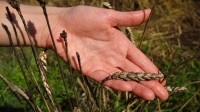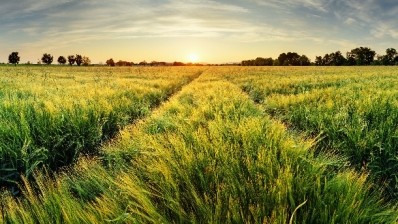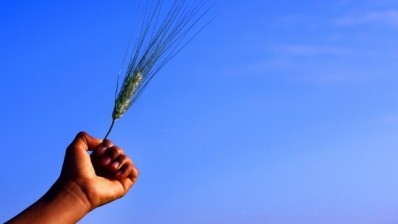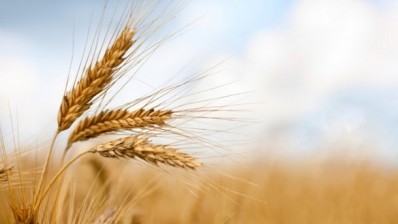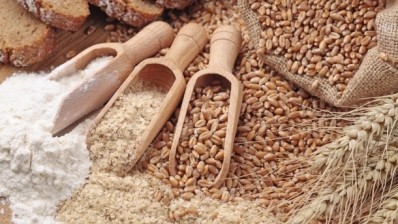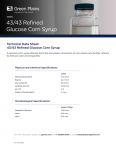Rust continues to damage world wheat supplies

Wheat rust – known as the polio of agriculture – is making further advances in Europe, Africa and Asia, according to two new studies produced by scientists in collaboration with Food and Agriculture Organization (FAO) of the United Nations.
New races of the fungal disease, which can cause crop losses of up to 100% in untreated susceptible wheats, have been detected and the scientists say the Mediterranean is particularly at risk.
The reports, published by scientists at Aarhus University in Denmark and the International Maize and Wheat Improvement Center (CIMMYT), showed new races of both yellow rust and stem rust emerged in various regions of the world last year.
Concurrently, the studies confirmed that the better-known existing rust races have also spread to new countries.
As such, the scientists have called for the urgent need for early detection and action to limit severe damage to wheat production, particularly in the Mediterranean region.
“These new, aggressive rust races have emerged at the same time that we’re working with international partners to help countries combat the existing ones, so we have to be swift and thorough in the way we approach this,” said FAO plant pathologist Fazil Dusunceli.
“It's more important than ever that specialists from international institutions and wheat producing countries work together to stop these diseases in their tracks.”
Duscunceli explained this involves continuous surveillance, the sharing of data and building emergency response plans to protect farmers.
The annihilating force of wheat rust
Wheat is a primary source of food, particularly for over one billion people in developing countries.
These countries – including the northern and eastern African regions, the Near East, and West, Central and South Asia – account for almost 37% of global wheat production.
These regions are also particularly vulnerable to wheat rust.
According to Dr David Hodson of the International Maize and Wheat Improvement Center in Addis Ababa, Ethiopia, once rust manages to gain ground, it can very quickly spread out of control and has the ability to cause “large-scale destruction in a very short period of time over very large cultivated areas.”
The fungus produces millions of wind-borne spores, each of which is capable of starting a new even-more virulent infection.
If not detected and treated on time, it can turn a healthy looking crop – oftentimes, only weeks away from harvest – into a withering mess of yellow leaves, black stems and shrivelled grains.
Fungicides can help to limit damage, but early detection and rapid action are crucial.
Wheat rust’s destructive path in 2016
Last year, the largest stem rust outbreak seen in Europe for decades, devastated Sicilian crops.
According to reports, a new mutation of the stem rust pathogen – called TTTTF – demolished several thousands of hectares of durum wheat on the Italian island.
Without better control processes put into place, cautioned the researchers, it could quickly spread along the Mediterranean basin and the Adriatic coast.
More worryingly, they claim that bread wheat varieties, in particular, may be susceptible to TTTTF.
Several other countries across Africa, Central Asia and Europe have also been battling strains of yellow rust that have never before been seen.
Italy, Morocco and four Scandinavian countries have found an entirely new strain of yellow rust, yet to be given a name.
Initial analysis has suggested the new race is related to a family of strains that are aggressive and better adapted to higher temperatures than most others.
Wheat farmers in Ethiopia and Uzbekistan have also been fighting outbreaks of AF2012.
Ethiopia was particularly hard hit by the yellow rust last year, and the country lost tens of thousands of hectares of wheat. Until then, the AF012 stain had only been found in Afghanistan.
As new races emerged, so old ones continued to spread last year.
The already established Warrior (-) race of yellow rust, first detected in Northern Europe and Turkey a few years back, is now widely present in Europe and West Asia, while the Digalu (TIFTTF) race of stem rust continued to devastate wheat fields in Ethiopia.
Ug99 has now been detected in 13 countries, from East Africa to the Middle East. The most well-known race of stem rust, Ug99 is the deadliest strain with the ability to affect many wheat varieties as it keeps producing new variants.
Most recently, it was found in Egypt, one of the Middle East's most important wheat producers.
Limiting the effects
“Preliminary assessments are worrisome, but it is still unclear what the full impact of these new races will be on different wheat varieties in the affected regions,” said Dusunceli.
As such, the Borglaug Global Rust Initiative (GBRI) is stepping up its efforts to train rust experts from affected countries to boost their ability to detect and manage these emerging wheat rust races, as well as cap the effects of those already known.
The BGRI is a collaboration between the FAO, CIMMYT, the International Center for Agricultural Research in the Dry Areas (ICARDA) and Aarhus University.
The findings of the Aarhus study will be incorporated into the training, which is part of the FAO’s four-year global wheat rust programme, to detect and facilities collaboration between countries. It is also designed to act swiftly to control outbreaks before they turn into epidemics.
The BGRI has developed RustTracker.org, a global cereal rust surveillance and monitoring web portal.
Source:
“Caution: Risk of wheat stem rust in Mediterranean Basin in the forthcoming 2017 crop season following outbreaks on Sicily in 2016”
Published online ahead of print http://bit.ly/2kiws1U
Dr F. Dusunceli (FAO, Dr D. Hodson (CIMMYT), Dr B. Randazzo (Ciminna, Sicily), et al.
